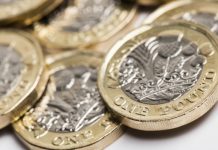After advancing to an almost three month high of US$1.2583 versus the dollar, the pound closed the previous week 0.2% lower. The pound has continued to slip versus the dollar in early trade on Monday. However, the pound US dollar exchange rate is still up over 2.25% so far this month.
The pound has found support across recent weeks as investors have reacted to Brexit headlines and reassessed the likelihood of a damaging no deal Brexit. This week Brexit developments will remain very much in focus and could take a different turn when the UK Supreme Court announces its decision as to whether Prime Minister Boris Johnson acted illegally proroguing Parliament for five weeks just ahead of the 31st October, the day that the UK is due to leave the EU. Should the UK’s highest court decide that Boris Johnson acted lawfully then ministers could be left with very little time to potentially prevent a no deal Brexit.
This week Boris Johnson will continue to meet with various leaders. Daily Brexit talks will also continue as the UK government pushes for a Brexit deal. The pound soared to a three-month high last week after European Commission President Jean-Claude Juncker sparked optimism that a Brexit deal was still possible. The pound then dropped on Friday as the Irish Prime Minister poured cold water on deal expectations. These moves highlight just how sensitive the pound is to Brexit headlines.
| Why is a “soft” Brexit better for sterling than a “hard” Brexit? |
| A soft Brexit implies anything less than UK’s complete withdrawal from the EU. For example, it could mean the UK retains some form of membership to the European Union single market in exchange for some free movement of people, i.e. immigration. This is considered more positive than a “hard” Brexit, which is a full severance from the EU. The reason “soft” is considered more pound-friendly is because the economic impact would be lower. If there is less negative impact on the economy, foreign investors will continue to invest in the UK. As investment requires local currency, this increased demand for the pound then boosts its value. |
Dollar Investors Eye US PMI Data
The US dollar advanced across the previous week, despite the Federal Reserve cutting interest rates by 0.25%. Dollar investors had been expecting the US central bank to indicate that they would continue to cut interest rates across the rest of the year. The Fed were less dovish than what market participants anticipated, with no further rate cuts planned. As a result, the dollar advanced.
Investors will be watching data closely this week. Strong data could further cool bets of another Fed rate cut and boost the dollar further. Today investors will be watching US PMI data. Later in the week US GDP figures will be under the spotlight.
| Why do interest rate cuts drag on a currency’s value? |
| Interest rates are key to understanding exchange rate movements. Those who have large sums of money to invest want the highest return on their investments. Lower interest rate environments tend to offer lower yields. So, if the interest rate or at least the interest rate expectation of a country is relatively lower compared to another, then foreign investors look to pull their capital out and invest elsewhere. Large corporations and investors sell out of local currency to invest elsewhere. More local currency is available as the demand of that currency declines, dragging the value lower. |
US data will come be released to a backdrop on the ongoing and fragile US — Sino trade talks. Relations between the two economic powers remained strained and investors will continue to monitor the situation closely. Any signs that talks are stalling could send the dollar higher. Investors often buy into the dollar in times of increased geopolitical tensions.
| What do these figures mean? |
| When measuring the value of a pair of currencies, one set equals 1 unit and the other shows the current equivalent. As the market moves, the amount will vary from minute to minute.
For example, it could be written: 1 GBP = 1.28934 USD Here, £1 is equivalent to approximately $1.29. This specifically measures the pound’s worth against the dollar. If the US dollar amount increases in this pairing, it’s positive for the pound. Or, if you were looking at it the other way around: 1 USD = 0.77786 GBP In this example, $1 is equivalent to approximately £0.78. This measures the US dollar’s worth versus the British pound. If the sterling number gets larger, it’s good news for the dollar. |
This publication is provided as general information only and is not intended as an exhaustive treatment of its subject. TransferWise Inc. and its affiliates (“we” or “us”) expressly disclaim any contractual or fiduciary relationship with you on the basis of the content of this publication, and you may not rely thereon for any purpose. You should consult with qualified professionals or specialists before taking, or refraining from, any action on the basis of the content in this publication. The information in this publication does not constitute legal, tax, investment or other professional advice from us. We make no representations, warranties or guarantees, whether express or implied, that the content in the publication is accurate, complete or up to date, and DISCLAIM ANY IMPLIED WARRANTIES OF MERCHANTABILITY OR FITNESS FOR A PARTICULAR PURPOSE.





